The following excerpts are from ‘How Exactly Wolves Change the Course of Rivers’ by Ray Molina of yourdailymedia.com Mar. 1, 2014
I know you’re thinking that this can’t be possible – just read on!
Just this week ViralNova posted this topic so I thought I’d republish it for those who missed it on Mar. 4, 2014. The video is really a must see.
…Trophic cascade is when the behavior of top predators have a trickling down effect on their environment. Let’s call these predators the “one percent.”

The one percent may be vicious killing machines who think only of themselves, but even bad intentions could have good outcomes. We are finding out that their murderous ways can be useful in controlling the over population of herbivores that are eating more than their fair share, which leaves little for a multitude of other animals lower on the food chain.

Eventually there will be plenty of wolves, perhaps even too many, and at some point we may need to protect the rest of the food chain from these top predators.

But like most things, if not everything, there’s a time and a place.
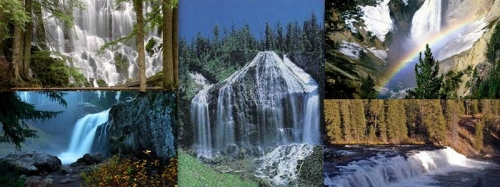
I do wonder about whether or not the Ecosystems would have just found a new way to balance themselves out over time. Who knows how long that might have taken though, or maybe it’s currently happening in ways we cannot yet witness.
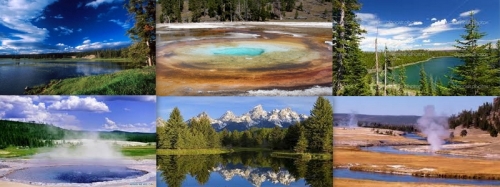
The main culprit of our Eco failures is you and me through our destruction of habitats through land-developing and hunting and pollution. We really blew it, and now we’re trying to cut our losses by celebrating animals that repair our mistakes.
In the video below, Author/Activist George Monbiot describes to an audience at TED the effects of Wolves that were reintroduced into Yellowstone National Park in the mid 90’s.
He describes how the wolves, in a relatively short period of time, have transformed the landscape and allowed more varieties of life to flourish. And wolves did it in ways we never expected.
It’s a humbling reminder of just how connected life on this planet really is.
The original TED talk by George Monbiot, gives numerous examples of how “rewilding” our ecosystem can give us back the earth our predecessors had the privilege of experiencing.
NOTE: There are “elk” pictured in this video when the narrator is referring to “deer.” This is because the narrator is British and the British word for “elk” is “red deer” or “deer” for short. The scientific report this is based on refers to elk so we wanted to be accurate with the truth of the story.
When wolves were reintroduced to Yellowstone National Park in the United States after being absent nearly 70 years, the most remarkable “trophic cascade” occurred. What is a trophic cascade and how exactly do wolves change rivers? George Monbiot explains in this movie remix.
Narration from TED: “For more wonder, rewild the world” by George Monbiot. Watch the full talk, here: http://bit.ly/N3m62h
Article link – http://www.yourdailymedia.com/post/how-exactly-do-wolves-change-rivers

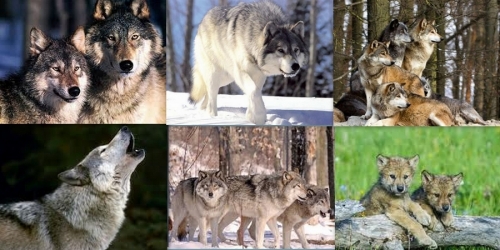
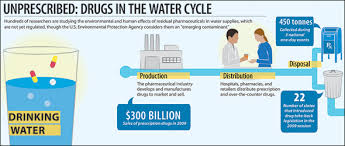
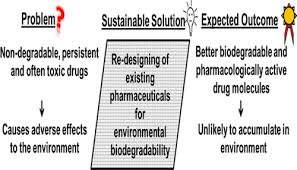 Making pharmaceuticals that degrade before they can contaminate drinking water.
Making pharmaceuticals that degrade before they can contaminate drinking water.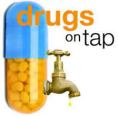 In recent years, researchers have realized that many products, including pharmaceuticals, have ended up where they’re not supposed to be — in our drinking water. But now scientists have developed a way to make drugs that break down into harmless compounds before they contaminate our taps.
In recent years, researchers have realized that many products, including pharmaceuticals, have ended up where they’re not supposed to be — in our drinking water. But now scientists have developed a way to make drugs that break down into harmless compounds before they contaminate our taps. 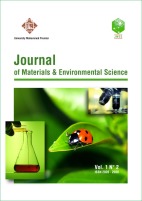 Their report appears in ACS’ journal
Their report appears in ACS’ journal Environmental Science & Technology.
Environmental Science & Technology. The researchers chose to work with a commonly used drug called propranolol — a beta blocker prescribed to treat high blood pressure and to prevent heart problems. It is very stable and has been found in sewage. They made a small molecular change in its structure that didn’t affect its beta blocking activity but allowed it to break down more easily than the
The researchers chose to work with a commonly used drug called propranolol — a beta blocker prescribed to treat high blood pressure and to prevent heart problems. It is very stable and has been found in sewage. They made a small molecular change in its structure that didn’t affect its beta blocking activity but allowed it to break down more easily than the 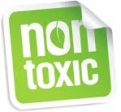 original form. Further studies are needed, but initial testing showed that the altered drug and its byproducts are likely not toxic. The researchers suggest that a similar approach could be used to re-design other classes of drugs and chemicals to make them more environmentally friendly, too.
original form. Further studies are needed, but initial testing showed that the altered drug and its byproducts are likely not toxic. The researchers suggest that a similar approach could be used to re-design other classes of drugs and chemicals to make them more environmentally friendly, too. 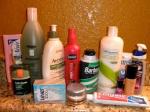 A wide range of active ingredients originating from pesticides, shampoos, lotions, cosmetics, disinfectants and drugs get washed into sewage systems or rivers and streams, ending up in our tap water.
A wide range of active ingredients originating from pesticides, shampoos, lotions, cosmetics, disinfectants and drugs get washed into sewage systems or rivers and streams, ending up in our tap water. 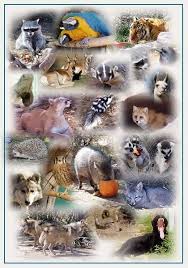 Scientists don’t have a complete picture yet of what effects these substances have on wildlife and human health, but they are a major concern. Researchers have detected them in low levels in streams and rivers across the United States and in other countries. To address the specific problem of medications in the environment, Klaus Kümmerer and colleagues made tweaks to pharmaceuticals so they degrade after they’ve passed through both the body and sewage treatment systems, which aren’t capable of scrubbing wastewater of all contaminants.
Scientists don’t have a complete picture yet of what effects these substances have on wildlife and human health, but they are a major concern. Researchers have detected them in low levels in streams and rivers across the United States and in other countries. To address the specific problem of medications in the environment, Klaus Kümmerer and colleagues made tweaks to pharmaceuticals so they degrade after they’ve passed through both the body and sewage treatment systems, which aren’t capable of scrubbing wastewater of all contaminants. Dr. Klaus Kümmerer, professor of sustainable chemistry and material resources at the University of Lüneburg
Dr. Klaus Kümmerer, professor of sustainable chemistry and material resources at the University of Lüneburg You can refill an 8 oz glass of water approximately
You can refill an 8 oz glass of water approximately An automatic dishwasher uses approximately 9 to 12 gallons of water while hand washing dishes can use up to 20 gallons.
An automatic dishwasher uses approximately 9 to 12 gallons of water while hand washing dishes can use up to 20 gallons. If every household in America had a faucet that dripped once each second, 928 million gallons of water a day would leak away.
If every household in America had a faucet that dripped once each second, 928 million gallons of water a day would leak away. A dairy cow must drink four gallons of water to produce one gallon of milk.
A dairy cow must drink four gallons of water to produce one gallon of milk. One gallon of water weighs approximately 8½ pounds.
One gallon of water weighs approximately 8½ pounds. One inch of rainfall drops 7,000 gallons, or nearly 30 tons of water, on a 60′ x 180′ piece of land.
One inch of rainfall drops 7,000 gallons, or nearly 30 tons of water, on a 60′ x 180′ piece of land.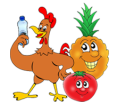 65% of the human body is water,
65% of the human body is water,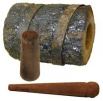 The first water pipes in the U.S. were made of hollowed-out logs.
The first water pipes in the U.S. were made of hollowed-out logs.











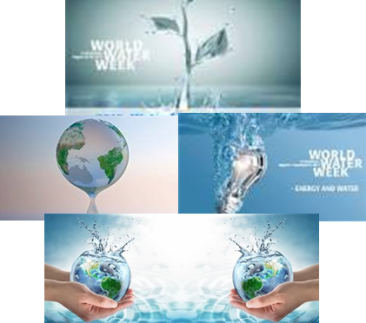
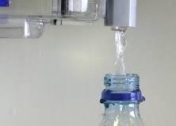
 Soak pots and pans instead of letting the water run while you scrape them clean.
Soak pots and pans instead of letting the water run while you scrape them clean. Don’t use running water to thaw food. For water efficiency and food safety, defrost food in the refrigerator.
Don’t use running water to thaw food. For water efficiency and food safety, defrost food in the refrigerator. Large pans may require more cooking water than necessary.
Large pans may require more cooking water than necessary. Collect the water you use while rinsing fruit and vegetables. Use it to water house plants.
Collect the water you use while rinsing fruit and vegetables. Use it to water house plants.
 More than 79,000 tons of chlorine are used per year in the United States.
More than 79,000 tons of chlorine are used per year in the United States. Of all the earth’s water, 97% is salt water found in oceans and seas. Only 1% of the earth’s water is available for drinking water. Two percent is currently frozen.
Of all the earth’s water, 97% is salt water found in oceans and seas. Only 1% of the earth’s water is available for drinking water. Two percent is currently frozen. About two thirds of the human body is water.
About two thirds of the human body is water. Public water suppliers process 38 billion
Public water suppliers process 38 billion  About 800,000 water wells are drilled each year in the United States for domestic, farming, commercial, and water testing purposes.
About 800,000 water wells are drilled each year in the United States for domestic, farming, commercial, and water testing purposes. Typically, households consume at least 50% of their water by lawn watering.
Typically, households consume at least 50% of their water by lawn watering.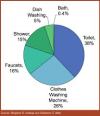 Inside, toilets use the most water,
Inside, toilets use the most water,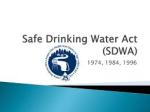 In 1974, Congress passed the
In 1974, Congress passed the  More than 13 million households get their water from their own private wells and are responsible for treating and pumping the water themselves.
More than 13 million households get their water from their own private wells and are responsible for treating and pumping the water themselves.
 The average daily requirement for fresh water in the United States is about 40 billion gallons a day, with about 300 billion gallons used untreated for agriculture and commercial purposes.
The average daily requirement for fresh water in the United States is about 40 billion gallons a day, with about 300 billion gallons used untreated for agriculture and commercial purposes.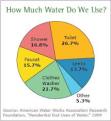 Each person uses
Each person uses
 For 18 years, Stockholm Junior Water Prize has congregated the world’s most imaginative young minds for an outstanding competition in the capital of Sweden, encouraging their continued interest in water and sustainability issues.
For 18 years, Stockholm Junior Water Prize has congregated the world’s most imaginative young minds for an outstanding competition in the capital of Sweden, encouraging their continued interest in water and sustainability issues.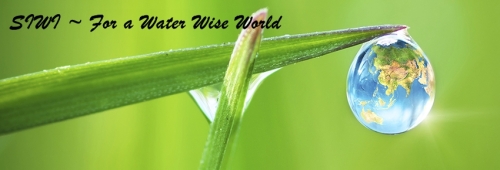




 The group makes their way up to Fording River Pass, along the continental divide, before crossing into British Columbia. After leaving the tree line behind they reached a large stony area where a patch of petrified horn coral dating back to the mid-to-late Cretaceous period, some 66 to 140 million years ago. (Photo courtesy Janet and Mike Michaud)
The group makes their way up to Fording River Pass, along the continental divide, before crossing into British Columbia. After leaving the tree line behind they reached a large stony area where a patch of petrified horn coral dating back to the mid-to-late Cretaceous period, some 66 to 140 million years ago. (Photo courtesy Janet and Mike Michaud) The group reaches British Columbia after crossing the continental divide. (Photo courtesy Janet and Mike Michaud)
The group reaches British Columbia after crossing the continental divide. (Photo courtesy Janet and Mike Michaud) Dewy scans the horizon on day 3, from the summit of a mountain he called the Strawberry Hills. (Photo courtesy Janet and Mike Michaud)
Dewy scans the horizon on day 3, from the summit of a mountain he called the Strawberry Hills. (Photo courtesy Janet and Mike Michaud) Atop the Strawberry Hills. (Photo courtesy Janet and Mike Michaud)
Atop the Strawberry Hills. (Photo courtesy Janet and Mike Michaud) Lunch break on the summit of the Strawberry Hills afforded breathtaking 360 degree views of the valleys below. (Photo courtesy André Préfontaine/Canadian Geographic)
Lunch break on the summit of the Strawberry Hills afforded breathtaking 360 degree views of the valleys below. (Photo courtesy André Préfontaine/Canadian Geographic) An early morning view of Mount McPhail through the mist. Taken at the third and final base camp along McPhail Creek. (Photo courtesy André Préfontaine/Canadian Geographic)
An early morning view of Mount McPhail through the mist. Taken at the third and final base camp along McPhail Creek. (Photo courtesy André Préfontaine/Canadian Geographic) Photo courtesy André Préfontaine/Canadian Geographic
Photo courtesy André Préfontaine/Canadian Geographic Three chuck wagons follow the Highwood River as the group makes their way out of the mountain back to High River Junction on the last day of the ride. The wagons contain all the gear and food for the seven-day ride. (Photo courtesy André Préfontaine/Canadian Geographic)
Three chuck wagons follow the Highwood River as the group makes their way out of the mountain back to High River Junction on the last day of the ride. The wagons contain all the gear and food for the seven-day ride. (Photo courtesy André Préfontaine/Canadian Geographic) Dewy stands on a fossil patch on the way up to the Fording River Pass. (Photo courtesy Christine Thomas)
Dewy stands on a fossil patch on the way up to the Fording River Pass. (Photo courtesy Christine Thomas) Dewy rides to the top Fording River Pass. (Photo courtesy Christine Thomas)
Dewy rides to the top Fording River Pass. (Photo courtesy Christine Thomas)





